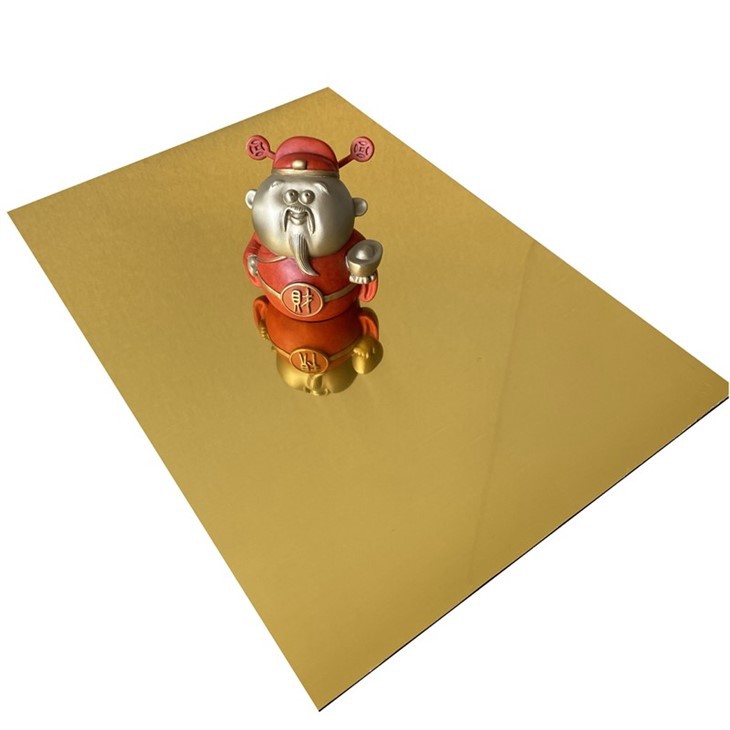Cladding Aluminium Composite Panels (ACP) have gained significant popularity in the construction and design industries due to their versatility, durability, and aesthetic appeal. As a trusted supplier of cladding ACP, I've encountered various common problems associated with these panels over the years. In this blog post, I'll delve into these issues and provide practical solutions to ensure the successful installation and long - term performance of ACP cladding.
Delamination
One of the most prevalent problems with cladding ACP is delamination, which occurs when the aluminum sheets separate from the core material. This issue can be attributed to several factors, including poor manufacturing processes, improper storage conditions, or the use of low - quality adhesives.
Causes:
- Manufacturing Defects: If the adhesive used during the manufacturing process is not of high quality or is applied unevenly, it can lead to weak bonding between the aluminum layers and the core.
- Environmental Factors: Exposure to extreme temperatures, high humidity, or direct sunlight for extended periods can cause the adhesive to break down, resulting in delamination.
- Mechanical Stress: Improper installation, such as excessive bending or impact during handling, can also cause the layers to separate.
Solutions:
- Quality Assurance: As a supplier, I ensure that all our ACP products are manufactured using high - quality adhesives and undergo strict quality control measures. We source materials from reliable suppliers and follow industry - best manufacturing practices.
- Proper Installation: Provide detailed installation guidelines to our customers. Installers should be trained to handle the panels carefully, avoiding excessive force during installation. The panels should be installed in accordance with the manufacturer's recommendations, including the use of appropriate fasteners and sealing materials.
- Environmental Considerations: Advise customers on proper storage and installation conditions. Panels should be stored in a dry, cool place, away from direct sunlight. During installation, ensure that the building environment is suitable, and take measures to protect the panels from extreme weather conditions.
Color Fading
Color fading is another common problem with cladding ACP, especially when the panels are exposed to harsh environmental conditions. Over time, the color of the ACP can change, affecting the overall aesthetic of the building.
Causes:
- UV Exposure: Ultraviolet (UV) rays from the sun can break down the pigments in the paint or coating of the ACP, causing color fading.
- Chemical Exposure: Exposure to chemicals, such as pollutants in the air or cleaning agents, can also damage the surface finish of the panels and lead to color changes.
Solutions:
- UV - Resistant Coatings: We offer ACP with high - quality UV - resistant coatings. These coatings are designed to protect the panels from the harmful effects of UV rays, reducing the risk of color fading.
- Proper Cleaning: Provide customers with guidelines on proper cleaning methods. Use mild, non - abrasive cleaning agents and avoid harsh chemicals that can damage the surface finish. Regular cleaning can help maintain the appearance of the panels and prevent the build - up of dirt and pollutants.
- Periodic Inspections: Encourage customers to conduct periodic inspections of the cladding. If any signs of color fading are detected early, appropriate measures can be taken, such as touch - up painting or replacement of the affected panels.
Surface Scratching
Surface scratching is a common issue that can occur during the installation, transportation, or day - to - day use of cladding ACP. Scratches not only affect the appearance of the panels but can also compromise their protective coating, making them more susceptible to other problems.

Causes:

- Improper Handling: During transportation and installation, the panels can come into contact with sharp objects or rough surfaces, causing scratches.
- Cleaning Tools: The use of abrasive cleaning tools, such as steel wool or rough brushes, can also scratch the surface of the ACP.
Solutions:

- Protective Film: Our OEM Protective Film Wholesale Composite Aluminum Panel comes with a protective film that helps prevent scratches during transportation and installation. The film should be left on until the installation is complete.
- Gentle Handling: Train installers to handle the panels with care. Use soft - padded tools and avoid dragging the panels across rough surfaces.
- Proper Cleaning Tools: Recommend the use of soft, non - abrasive cleaning tools, such as microfiber cloths or sponge mops, for cleaning the panels.
Water Infiltration
Water infiltration is a serious problem that can lead to structural damage, mold growth, and corrosion of the ACP and the underlying building structure.

Causes:
- Poor Sealing: Inadequate sealing around the edges of the panels, joints, and penetrations can allow water to enter the cladding system.
- Improper Installation: Incorrect installation, such as improper slope or drainage, can prevent water from draining properly, leading to water pooling and infiltration.
Solutions:
- Quality Sealing Materials: Provide high - quality sealing materials, such as silicone sealants, to ensure proper sealing around the panels. The sealants should be applied correctly and regularly inspected for signs of damage or deterioration.
- Proper Installation Design: Ensure that the installation design includes proper slope and drainage features. The panels should be installed in a way that allows water to drain freely from the cladding system.
- Regular Inspections: Encourage customers to conduct regular inspections of the cladding for signs of water infiltration, such as water stains or mold growth. If any issues are detected, they should be addressed immediately.
Structural Integrity Issues
In some cases, cladding ACP may experience structural integrity issues, such as warping or buckling. These issues can affect the stability of the cladding system and pose a safety risk.
Causes:
- Thermal Expansion and Contraction: ACP panels expand and contract with changes in temperature. If the panels are not installed with sufficient expansion joints, the stress caused by thermal movement can lead to warping or buckling.
- Overloading: Excessive weight or pressure on the panels, such as from snow or wind loads, can also cause structural damage.
Solutions:
- Expansion Joints: Provide detailed installation guidelines on the use of expansion joints. The joints should be installed at appropriate intervals to allow for thermal movement and prevent stress build - up.
- Load Calculation: Work with architects and engineers to ensure that the ACP cladding system is designed to withstand the expected loads. This may involve using thicker panels or additional support structures in areas with high loads.
Conclusion
As a cladding ACP supplier, I understand the importance of providing high - quality products and solutions to our customers. By being aware of the common problems associated with ACP cladding and implementing the appropriate solutions, we can ensure the successful installation and long - term performance of these panels.
If you're considering using cladding ACP for your next project, we offer a wide range of products, including Digital Print Advert Signs Aluminium Composite Panel and 1500x3000mm Acp/acm Sheet For Interior Or Exterior Wall Cladding. Our team of experts is ready to assist you with product selection, installation guidance, and any other questions you may have. Contact us today to start a procurement discussion and find the best ACP solution for your needs.
References
- "Aluminium Composite Panels: Properties, Applications, and Durability" - Construction Materials Journal
- "Best Practices for Installing Aluminium Composite Panel Cladding" - International Association of Building Envelope Consultants